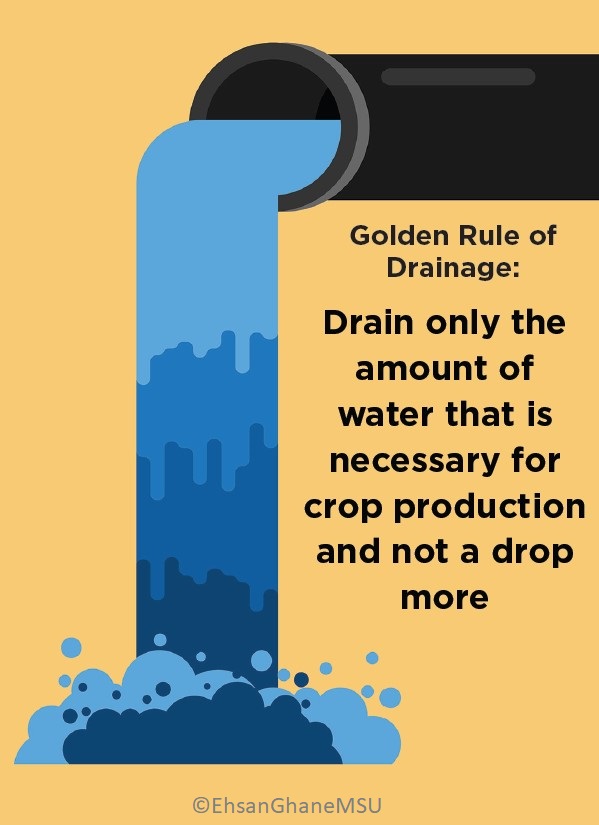Environmental Impact
For the pdf version of this bulletin, click here.
12. Environmental impact
The two major pathways for nutrient transport from a subsurface-drained field are surface runoff and drainage discharge. While farmers need subsurface drainage for economical crop production, it can also transport nutrients to surface water (Table 1). Drainage discharge has been recognized as a considerable pathway for phosphorus loss from the field to surface water bodies (King et al., 2015). As excess phosphorus gets into surface water, it can cause harmful algal blooms.
For fresh water bodies, P is the limiting nutrient for algae growth meaning that as P concentration increases, it stimulates an increase in algae growth. However, increases in nitrate concentration have been shown to increase algae toxin production in fresh water (Horst et al., 2014). Because freshwater surrounds Michigan, phosphorus is the primary nutrient of concern.
Western Lake Erie and the Saginaw Bay are the two most vulnerable water bodies surrounding Michigan due to their shallower water depth that provides warmer temperatures for algae. The western basin of Lake Erie has an average water depth of only 24 feet (up to 32 feet deep), whereas the average water depth of the eastern basin of Lake Erie is 80 feet (up to 200 feet deep) (NOAA). This explains the warmer water temperature in Lake Erie’s western basin. The inner bay of Saginaw Bay has an average water depth of 15 feet (up to 45 feet deep) (McCormick and Schwab, 2008) that allows water to warm up faster and provide temperatures suitable for algal blooms.
13. Conclusion
Subsurface drainage has many benefits. It is needed to sustain agricultural production in many areas, but it can exacerbate nutrient loss. Solutions to address water quality issues are needed to reduce the transport of P and nitrogen to surface water bodies. Agricultural conservation practices such as nutrient management, controlled drainage, saturated buffers, wetland, denitrifying woodchip bioreactors, and two-stage ditches are available to help address this water quality issue. Furthermore, other technologies such as P-filters with P-adsorbing media are being investigated as a solution. Keep in mind the Golden Rule of Drainage:




 Print
Print Email
Email